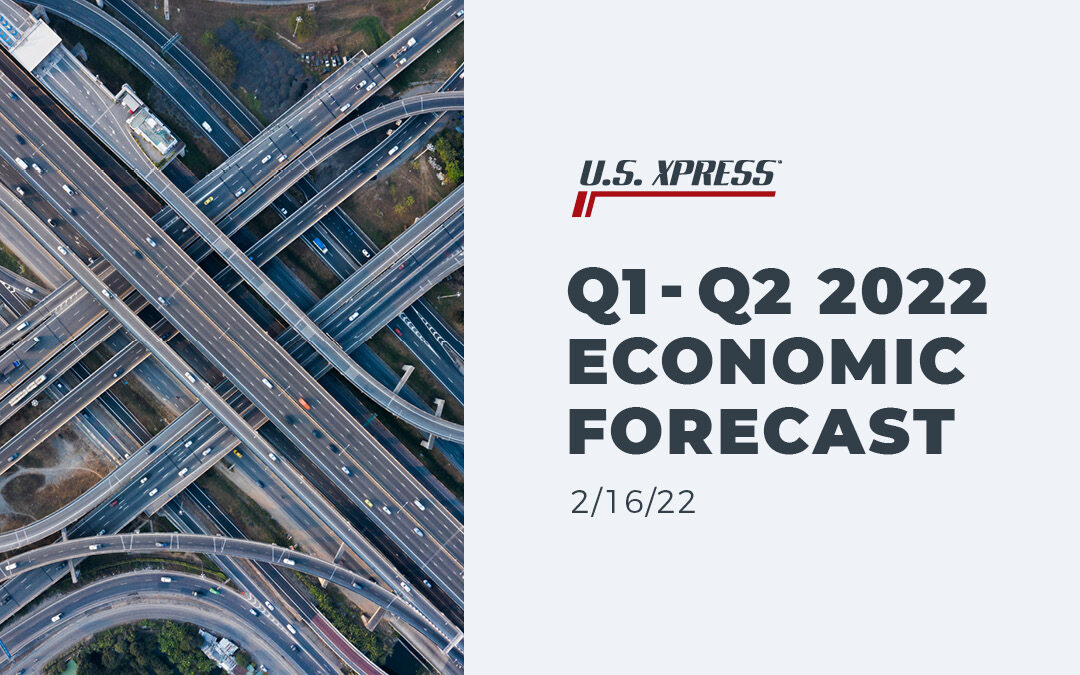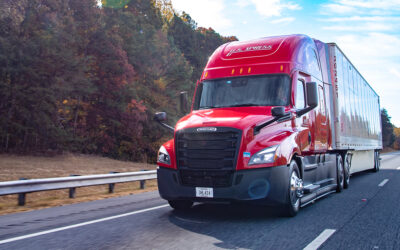Throughout this nearly two-year global pandemic, we’ve been carefully monitoring key economic indicators within the logistics industry to create quarterly industry forecasts. Hopefully you and your teams have found these reports insightful as you plan your shipping needs.
This year, we’re scaling back our cadence and creating first- and second-half outlooks on the industry. Today, we published the first of these two. You can download the full report here.
Below are four key themes for the first half of the year:
1) Incremental growth in truckload capacity.
The allure of an inflationary rate environment and robust freight volumes is hard to resist for entrepreneurial drivers who want to reap the benefits by running under their own operating authority. Recruiting efforts of midsize and larger fleets will continue to contend with drivers’ desire to become owner-operators or independent carriers. Asset-based carriers will have to rely more on their brokerage divisions to corral the trucks they need to serve their contract commitments.
2) Tractor and trailer equipment backlogs.
We continue to see record retail prices for used power units, with increases of nearly 68% year over year. Last year also saw a slew of new entrants into the carrier market despite record high equipment prices. A theory we’re exploring is that more experienced drivers are taking advantage of ballooning real estate values by using the equity in their homes to finance the purchase of used equipment. Additionally, the Biden administration expects the global semiconductor shortage to persist through at least the second half of this year, so the strain on equipment manufacturing might not be resolved anytime soon.
3) Tightened consumer spending.
Many government agencies have reported that inflation is at its highest in several decades, and increasing wage, materials, and transportation costs are still working their way downstream from manufacturers and food suppliers to retailers and consumers. If inflation continues to creep into Americans’ daily purchasing decisions, it’ll erode their sense of confidence in the economy. However, flagging consumer demand could help resolve much of the strain currently being placed on supply chains.
4) Legislative agendas in a midterm election year.
Late 2021 ushered in an infrastructure bill that will have considerable impacts on the trucking industry. Construction projects likely will contend for workers who would have otherwise entered the driver pool. Ongoing supply chain challenges and workforce development programs certainly will be front-and-center for policymakers. A pared-back version of the “Build Back Better Act” could also re-emerge, and there’s still uncertainty on how unemployment benefits will look in a post-pandemic economy.
Although the country is still navigating uncharted waters, there’s plenty to look forward to in 2022. Encouraging signs abound, from labor markets to retail sales. However, inflation is certainly a cause for concern. If consumer confidence and consumption taper off, there will be clear ripple effects across an array of economic indicators — from unemployment rates to home prices. Yet irrespective of what lies ahead for the U.S. economy in 2022, the prospect of finally emerging from a global pandemic is alone worth celebrating.





